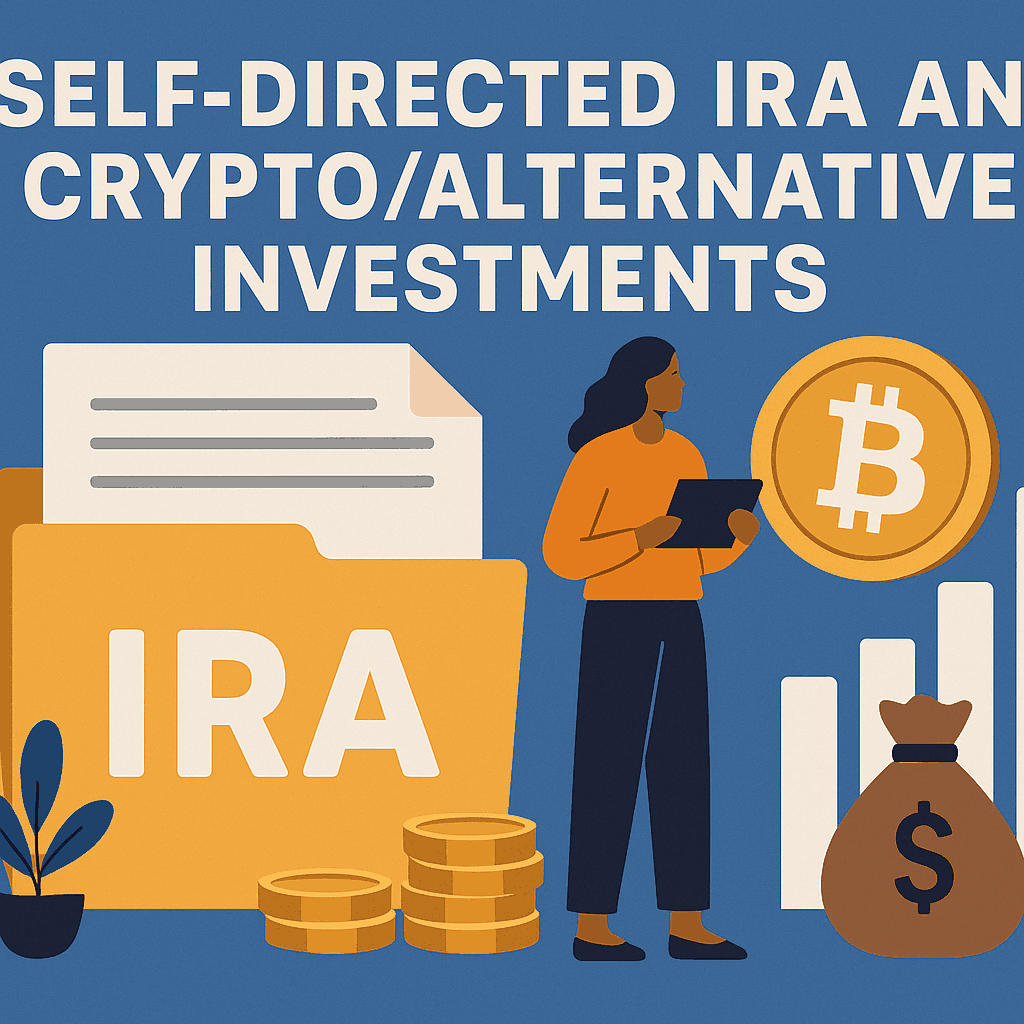
Most people think IRAs are limited to mutual funds and stocks—but they’re not. With a Self-Directed IRA (SDIRA), you can take control of your retirement money and invest in alternative assets like crypto, real estate, private startups, and even precious metals.
This makes SDIRAs one of the most powerful but underutilized tools in long-term wealth building. For investors who want more control, diversification, and growth potential, this type of IRA unlocks new doors—especially in 2025 when digital assets and inflation hedges are trending.
Let’s break down how SDIRAs work, what you can invest in, and what risks to avoid.
What Is a Self-Directed IRA?
A Self-Directed IRA is a retirement account that allows you to invest in a much wider range of assets beyond traditional stocks and bonds.
The key difference is who controls the investment decisions. In a standard IRA, your custodian (like Vanguard or Fidelity) limits you to their menu of assets. With an SDIRA, you make the investment calls, and your custodian only facilitates the paperwork.
There are two types:
- Traditional SDIRA – Contributions are tax-deductible, earnings grow tax-deferred
- Roth SDIRA – Contributions are post-tax, earnings and withdrawals are tax-free in retirement
Both options offer flexibility, but tax treatment depends on your income and timing of withdrawals.
What Can You Invest In with a Self-Directed IRA?
With an SDIRA, you can access:
- Cryptocurrency (Bitcoin, Ethereum, etc.)
- Real estate (residential or commercial)
- Private companies and startups
- Precious metals (gold, silver, platinum)
- Private lending and promissory notes
- Tax liens and deeds
- Farmland or timberland
- Oil and gas partnerships
As long as it isn’t specifically prohibited by the IRS, it’s fair game.
What You Can’t Invest In
The IRS bans SDIRA investments in:
- Collectibles (art, antiques, rugs, wine)
- Life insurance contracts
- S-corporation stock
- Assets benefiting you or family members directly
Violating these rules can trigger tax penalties and even disqualification of the entire account.
SDIRA vs. Traditional IRA: Key Differences
| Feature | Traditional IRA | Self-Directed IRA |
|---|---|---|
| Investment options | Limited (stocks, bonds, funds) | Broad (crypto, real estate, etc.) |
| Custodian | Full-service brokerage | SDIRA custodian required |
| Fees | Low or zero | Higher setup and maintenance fees |
| Complexity | Easy | Requires due diligence |
| IRS restrictions | Few | More compliance risks |
SDIRAs offer more potential but also demand more responsibility.
How to Invest in Crypto Through a Self-Directed IRA
- Open an SDIRA with a crypto-eligible custodian
Firms like iTrustCapital, AltoIRA, and BitcoinIRA specialize in this space. - Fund your account
You can rollover funds from another IRA or make new contributions within IRS limits. - Choose your cryptocurrency
Pick from available digital assets like Bitcoin, Ethereum, Solana, or stablecoins. - Execute trades through the platform
Just like a brokerage, but your assets are held within the IRA for tax protection. - Secure your holdings
Custodians typically use cold storage or insured wallets, but it’s still your responsibility to understand how security works.
Advantages of SDIRA Crypto Investing
- Tax-deferred or tax-free growth
- Diversification beyond fiat-based markets
- Long-term upside potential of blockchain assets
This is especially useful for early crypto adopters who want to hold long-term without triggering taxable events.
Real Estate Investing via SDIRA
You can buy rental homes, commercial buildings, land, or fix-and-flip projects using your retirement funds.
Guidelines:
- The IRA owns the property, not you
- All income (rent) goes back into the IRA
- Expenses (repairs, taxes) must be paid from the IRA
- You or close family members cannot use the property personally
It’s ideal for those who understand real estate and want predictable cash flow in retirement.
Risks and Challenges
Custodian Fees
SDIRAs often have setup fees ($100–$300), annual maintenance fees ($250–$500+), and transaction costs.
IRS Compliance
If you accidentally perform a prohibited transaction, the entire account could lose its tax-advantaged status.
Due Diligence
You’re responsible for vetting every deal. Bad investments can wipe out your savings with no safety net.
Liquidity
Most alternative assets are illiquid. You may not be able to sell quickly in a downturn.
Volatility in Crypto
Crypto prices are highly unpredictable. Avoid using retirement accounts for short-term speculation.
Who Should Consider a Self-Directed IRA?
An SDIRA might be right for you if:
- You’re an experienced investor seeking diversification
- You believe in crypto or alternative asset growth
- You have a trusted network or business deals you want to access
- You want more control over retirement outcomes
- You’re comfortable with research, legal documents, and tax reporting
It may not be suitable if:
- You prefer passive investing
- You’re unfamiliar with tax rules
- You rely heavily on liquidity or plan to withdraw soon
How to Open a Self-Directed IRA
- Select a qualified SDIRA custodian
Make sure they’re regulated, offer the asset types you want, and provide solid customer support. - Choose your account type (Roth or Traditional)
This depends on whether you want tax-free withdrawals or tax-deferred growth. - Fund your account
Via rollover, transfer, or new contribution - Select and execute investments
Complete paperwork, perform due diligence, and ensure your custodian handles the title properly. - Track performance and compliance
Document all income and expenses, and file IRS Form 5498 and 1099-R as required.
Final Thoughts
A Self-Directed IRA for crypto and alternative investments isn’t for everyone—but for the right investor, it’s an incredible tool for expanding what’s possible with your retirement money.
Used wisely, it can unlock diversification, higher yields, and exposure to emerging assets like cryptocurrency or private ventures—all within a tax-advantaged structure.
Just be prepared to manage more complexity. Do your homework, avoid prohibited transactions, and always work with a qualified SDIRA custodian.